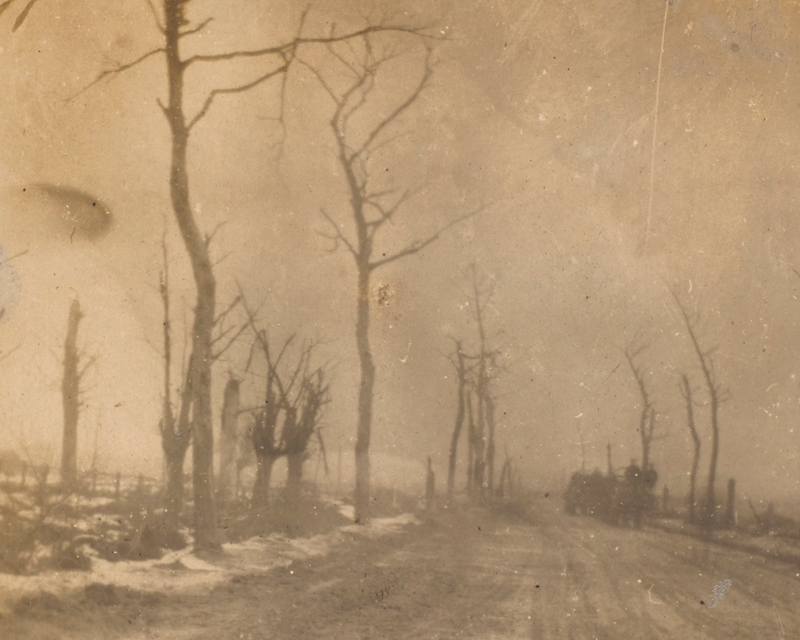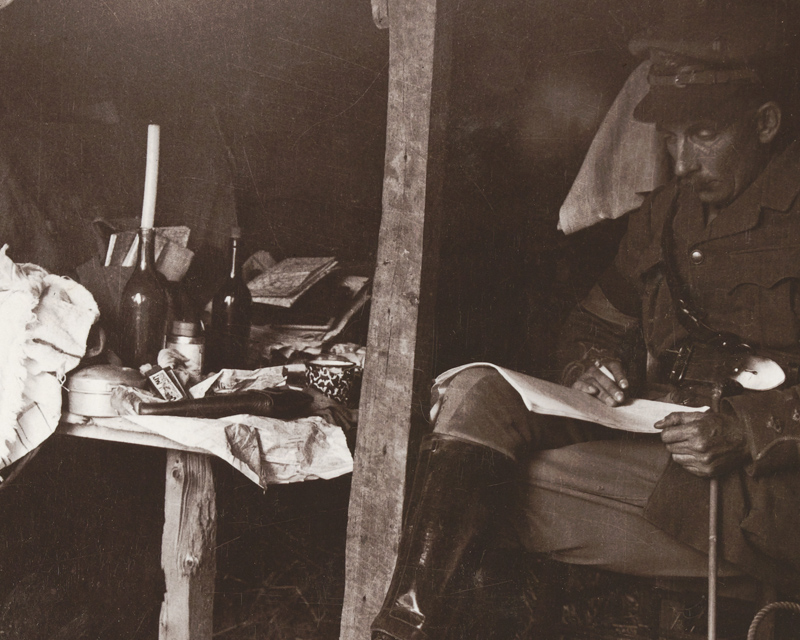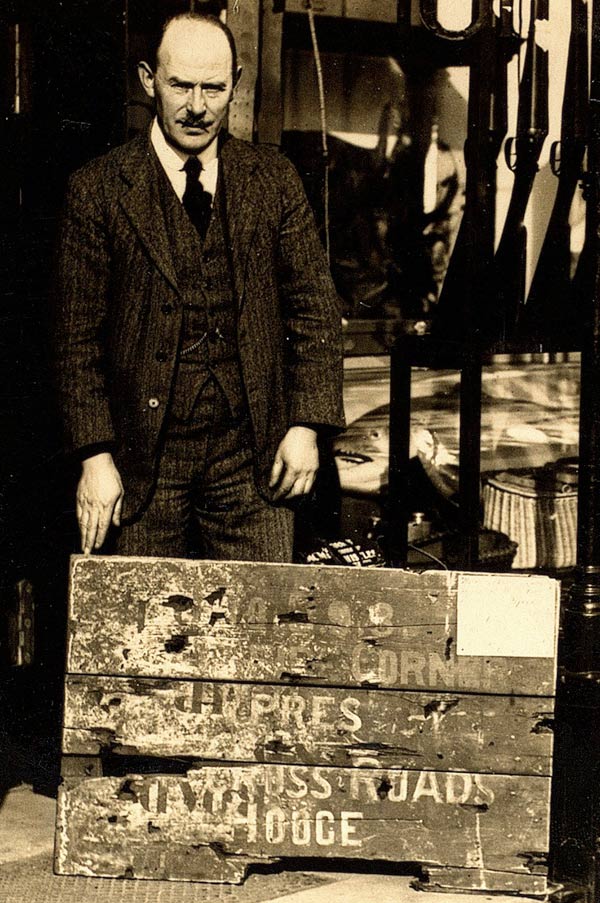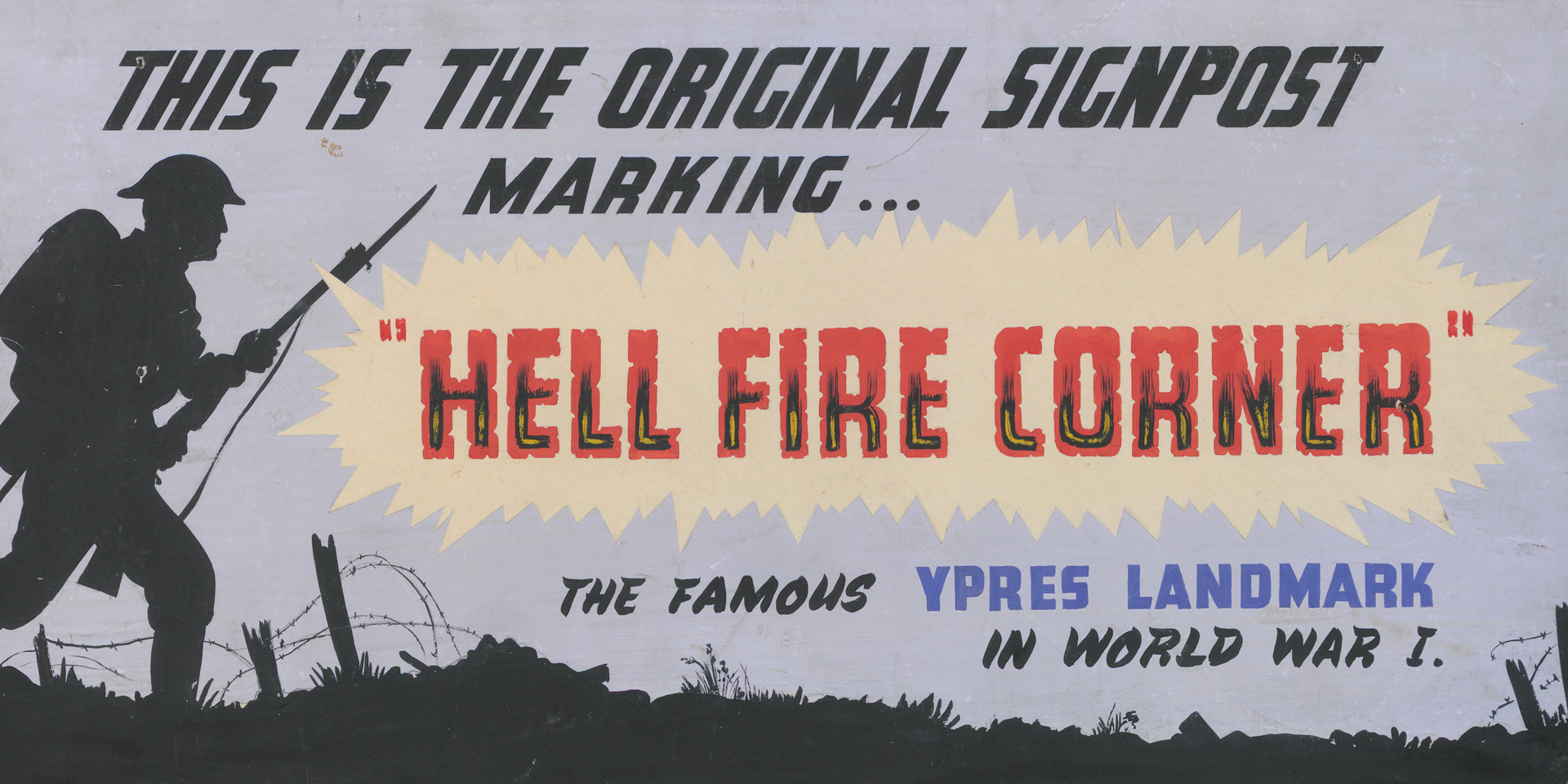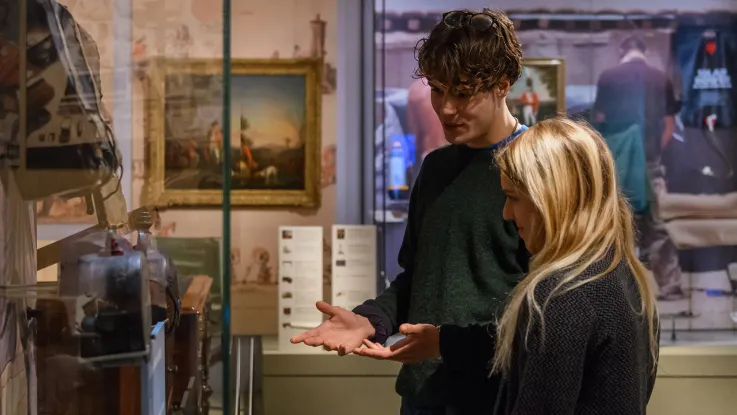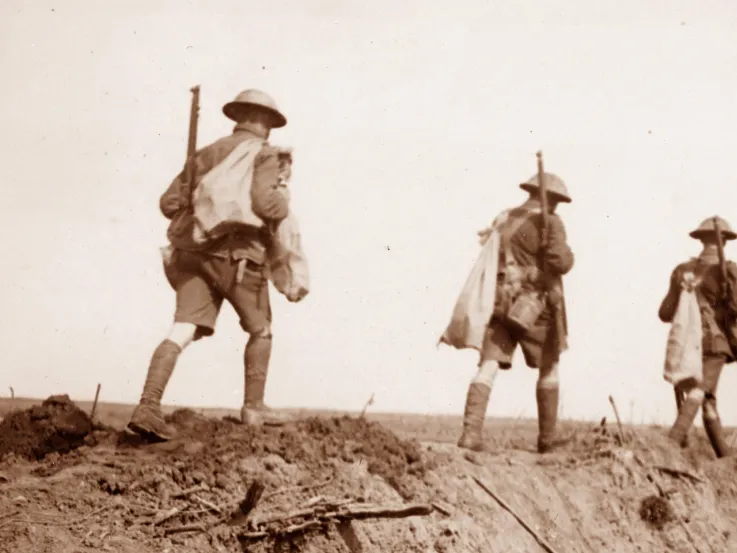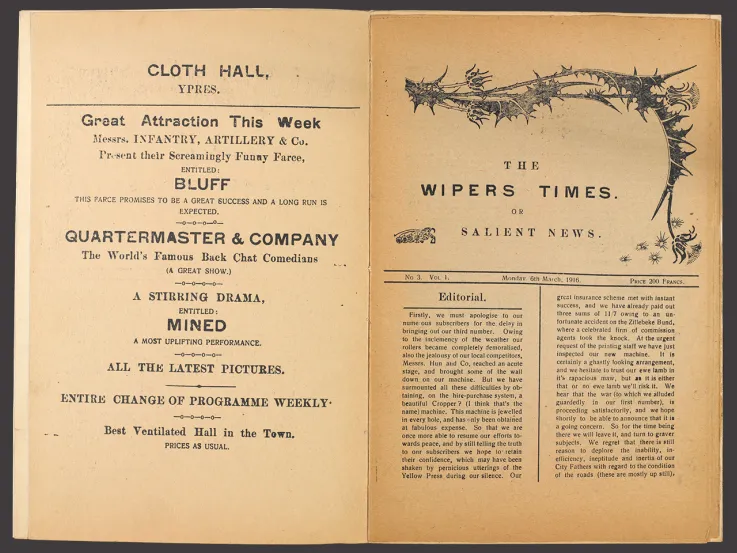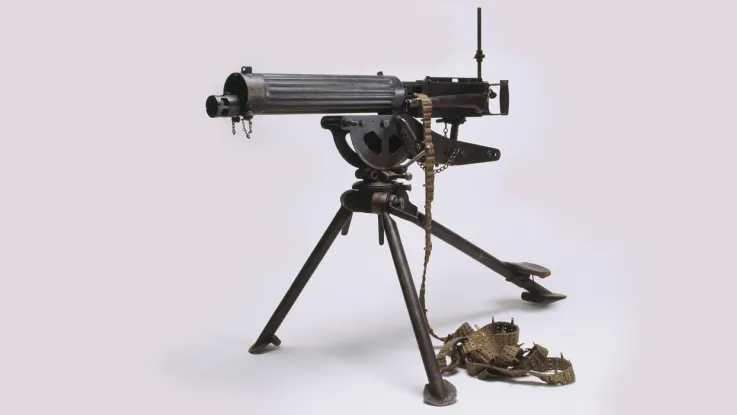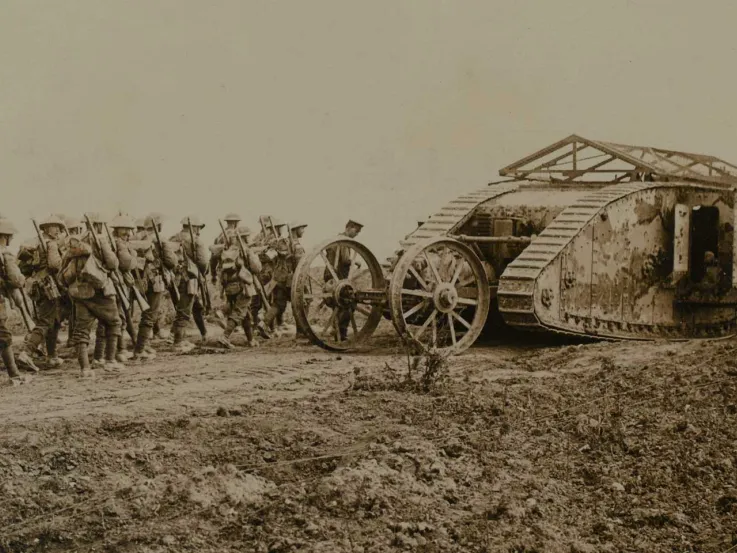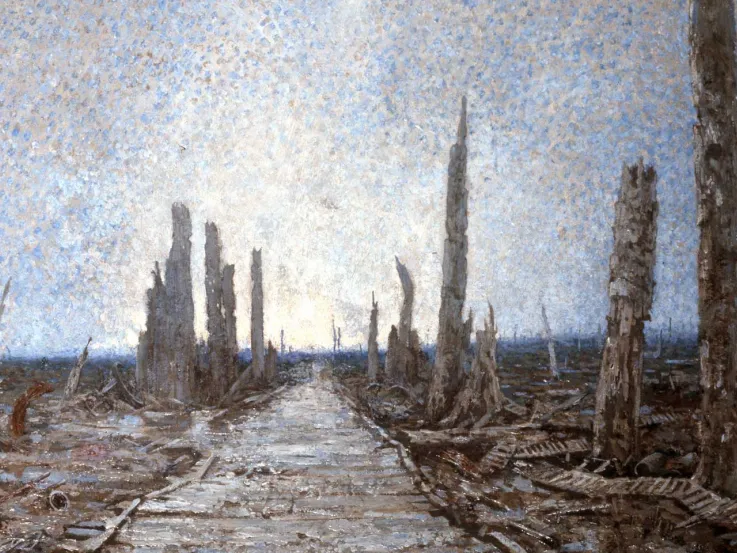The most dangerous corner on Earth
Hellfire Corner was an important transport hub on the Menin Road, which ran from Ypres to the frontline trenches. Situated in a particularly exposed area, it was under constant observation by the Germans and within easy range of their guns.
Anything moving along the roads here had to run the gauntlet of shellfire. As a result, it became notorious as ‘the most dangerous corner on Earth’ and earned its grim nickname.
Our sign is believed to be the last used at this position and shows signs of shell and small-arms damage, glaring evidence of the devastating firepower that swept across this area. The lettering on the sign, which can hardly be seen now, reads: ‘Hellfire Corner / Ypres / Cross Roads / Hooge’.
'Little Jack Horner at Hell Fire Corner'
The perils of Hellfire Corner would have been well known to British Empire soldiers. One divisional history records how ‘there were probably few soldiers with any length of service in France or Flanders who had not passed the traffic-man at the cross roads leading to Hellfire Corner, where the tide of motor ambulances ebbed and flowed so regularly’.
Its notoriety also made it part of the cultural landscape of the Western Front. It was often mentioned in satirical trench newspapers, like ‘The Wipers Times’ and ‘The B.E.F. Times’, known for their use of dark humour.
‘Little Jack Horner at Hell Fire Corner, Sat down a biscuit to chew, He didn’t care for the shells that flew there, He knew what his biscuit could do. There came a twelve-incher, but Jack didn’t flinch sir, He grasped at his biscuit, and waited, And then true and well the biscuit met shell, And the crump with a sigh detonated.’'The B.E.F. Times' — March 1917
Warrington Road
Artists were drawn to the epic devastation of the Ypres Salient and the Hellfire Corner area was painted many times. One well-known example is Richard Tennant Cooper’s ‘Warrington Road’, which depicts a track that ran nearby.
This haunting landscape forcefully brings home the devastation of war. It shows a wooden duckboard walkway flanked by shattered trees amidst a broken, muddy landscape, so typical of the Ypres sector.
Cooper saw extensive service on the Western Front with the Middlesex Regiment and the Royal Engineers. He produced many artworks and took various photographs of the Ypres Salient, including a shot of Hellfire Corner.
His caption to this image, which again underlies how dangerous the place was, reads:
‘Hell Fire Corner on the Menin Road near Ypres. A fearful spot. In 1917 I once ran down this place through a barrage of shells in the fields on each side! Never was the 100yds done in quicker time!’
Comfort and safety
Hellfire Corner was undoubtedly a place of great danger. But even here, comfort, camaraderie and revelry could be found in one of the many dugouts in this part of the Ypres sector.
While not impervious to shellfire and often prone to flooding, these dugouts provided relative comfort and safety from the terror and squalor above ground. Moreover, they were equipped with amenities, such as stoves and sleeping quarters, and were well supplied with medicine, food, cigarettes and even alcohol.
‘For several weeks in 1918 I had worked and slept within the shadow of that board. Along with another man I was quartered in a “dug out” just at the corner… It was quite a handsome habitation done up inside like a kitchen, fireplace and all. Many a shell burst around, but our dwelling, providentially as we thought, escaped a direct hit. Apart from the danger – for it was one of the hot corners of Europe – it was my pleasantest experience of the war. We dwelt lonely, freed from regimental rule…To view the board now is to recall something that seems like a dream, so easily do terrible experiences slip from the mind.’Anonymous veteran — 6 March 1920
The finest souvenir of the war
The soldier who wrote this ambiguous memory put it in a letter to a local newspaper. He was inspired to do so after seeing the sign displayed in the window of a shop in Prince’s Street, Edinburgh.
The shop was owned by William Storie, a solicitor from Jedburgh, who served during the war with the Royal Army Service Corps. He brought the sign back from the Western Front and placed it in the window as a cunning marketing ploy to attract people to his shop.
The display of the board caused quite a stir. Letters, such as the one quoted above, appeared in the local press, and Storie himself received many enquiries about it.
One letter described it as ‘the finest souvenir of the war I have ever seen’, and suggested it be donated to a museum, a sentiment echoed by many others. However, for a long time these requests went unheeded.
See it on display
After many years on display in the shop window, the Hellfire Corner signboard was eventually stored in a cupboard and forgotten about. It was unearthed by Storie’s family and donated to the National Army Museum in 1996.
The board now has a new home in our Soldier gallery. It signposts the ‘Action Theatre’ - an exhibit giving visitors an immersive insight into soldiers’ experiences of warfare - a fitting role for a relic from one of history’s most infamous battlefields.



